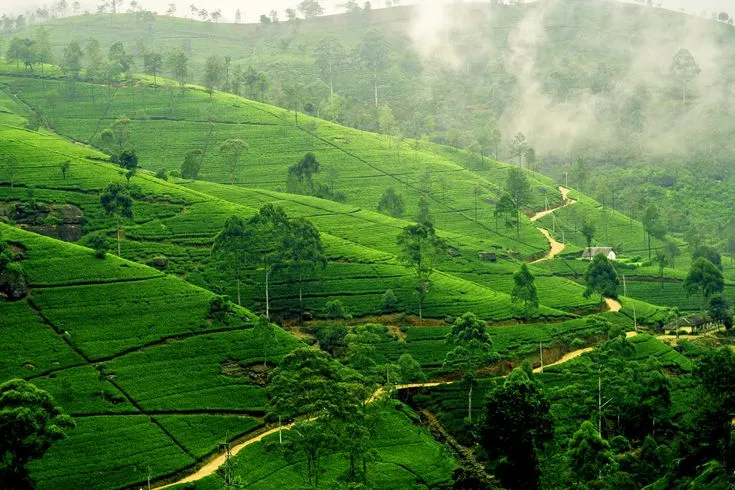For centuries, elephants have roamed the plains, forests, and valleys of Sri Lanka—revered in temples, celebrated in festivals, and etched into our identity as a symbol of strength and wisdom. But today, these majestic creatures face a far more uncertain fate. The growing tension between wild elephants and humans has reached a critical point, where both lives and livelihoods are at risk.
This is not just a conservation story. It’s a human story too. One that echoes across the dry zones, farming villages, and shrinking forests of Sri Lanka.
The Landscape of Conflict
Sri Lanka has one of the highest densities of wild elephants in Asia. According to the Department of Wildlife Conservation, over 7,000 wild elephants still exist in the country. But as human populations grow, forests are cleared for farming, infrastructure, and settlements. The result? Elephants are losing their natural habitats, forcing them to wander into human territory in search of food and water.
In regions like Hambantota, Monaragala, Ampara, and Anuradhapura, reports of elephants raiding paddy fields, breaking fences, and entering villages are becoming daily occurrences. And with these visits come tragedy—both for the elephants and the people.
The Numbers Tell a Grim Tale


According to the latest statistics:
- Over 100 elephants die every year due to human-related causes—shootings, electrocutions, poisonings, and train collisions.
- More than 50 humans are killed annually in elephant encounters.
Behind each number is a grieving family, a destroyed crop, or a fallen giant.
What’s even more alarming is the rising aggression on both sides. Farmers, whose livelihoods depend on harvests, feel helpless watching elephants flatten months of hard work overnight. Meanwhile, elephants—confused and stressed—are increasingly defensive when they encounter humans.
A Deeper Look at Why This Is Happening
1. Habitat Fragmentation
The core problem is habitat loss. Large-scale deforestation for development projects like highways, agriculture, and settlements has left elephants with nowhere to go. Once connected forest corridors are now cut off, pushing elephants into isolated pockets and forcing them to migrate through human zones.
2. Seasonal Water Scarcity
In the dry season, traditional water holes and forest reservoirs dry up. Elephants, in search of water, head toward village tanks or agricultural lands with irrigation canals—places where conflict is inevitable.
3. Crop Attractiveness
Paddy, bananas, sugarcane, and maize are all elephant favorites. These are the same crops grown in rural Sri Lanka. When food is scarce in the wild, elephants follow the scent—and this is how a conflict zone is created overnight.
Voices from the Frontline


A farmer in Medirigiriya shares, “We love elephants. But how can we live when they destroy everything? Last month, I lost my entire harvest. I have three kids to feed. What choice do we have?”
In contrast, a conservationist in Galgamuwa explains, “Elephants are not the enemy. They are confused. We are the ones who pushed into their homes. They’re just trying to survive.”
Both voices are valid. Both reflect pain, fear, and frustration. The challenge is not picking sides—it’s finding a way for both to coexist.
What’s Being Done?
The government, NGOs, and researchers have proposed several solutions—some with promise, others with controversy.
1. Electric Fences
These are the most widely used solution. But while they protect some areas, elephants often learn to break or bypass them. Maintenance is another challenge, as villagers often lack resources or training.
2. Translocation
Moving aggressive or “problem” elephants to other forests sounds good in theory but rarely works in practice(Elephants and Humans). Elephants often try to return to their original home ranges, become more aggressive, or fail to adapt.
3. Elephant Corridors
This is one of the most promising long-term strategies—connecting forest patches through designated safe routes. However, implementing corridors requires political will, community cooperation, and careful land acquisition.
4. Community Involvement
Involving local villagers in elephant monitoring, eco-tourism, and compensation programs can turn them from victims into protectors(Elephants and Humans). Pilot projects in areas like Wasgamuwa show that when people benefit from elephant conservation, conflict reduces.
The Role of Technology
Modern tools are slowly entering the conservation battlefield:
- GPS collars help track elephant movements and issue alerts.
- Mobile apps allow villagers to report sightings and receive warnings.
- Drone surveillance can monitor crop raids and guide early interventions.
But technology can’t replace empathy(Elephants and Humans). The long-term solution needs more than gadgets—it needs a mindset shift.
Can Tourism Be a Bridge?
Elephants are a major tourist attraction. Safari parks like Minneriya, Kaudulla, and Udawalawe draw thousands of visitors each year(Elephants and Humans). But while tourists marvel at these animals, the communities living beside them bear the brunt of the conflict.
If tourism revenue is better shared—with local villages getting a fair cut—then elephants become an economic asset instead of a threat. Eco-lodges, safari guides, and local craft markets are all ways to turn elephants into allies for rural communities.
Education is Key – Elephants and Humans
Young people growing up in conflict zones often inherit fear and resentment toward elephants. Changing this mindset begins with education—school programs, village workshops, and storytelling that teaches both conservation and coexistence(Elephants and Humans).
An 8-year-old in Udawalawe who joins a “Junior Wild Guardian” club may grow up to be an advocate for peaceful cohabitation rather than retaliation.
What Can You Do?
As a reader, traveler, or Sri Lankan citizen, you can help:
- Support ethical elephant tourism—avoid places that promote elephant riding or chains.
- Donate to local wildlife charities actively working in conflict zones.
- Raise awareness—share stories, support education, and advocate for policy change.
If you’re visiting Sri Lanka, ask: “Does my trip protect the elephant or exploit it?”
The Way Forward: Coexistence, Not Conflict
Elephants are part of Sri Lanka’s soul. Losing them would be more than an ecological tragedy—it would be a cultural one.
But protecting elephants shouldn’t come at the cost of human suffering. The real solution lies in balance. In reimagining how we use land. In listening to farmers and conservationists(Elephants and Humans). In walking gently—just as the elephants do—on this land we all share.
Because if the giants fall, we all lose.



